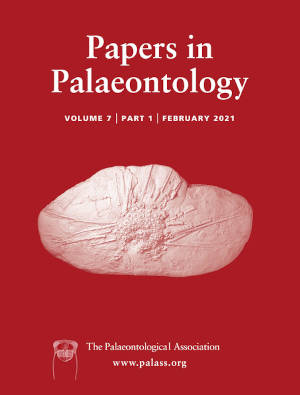Reg. Charity No. 1168330

The first Silurian trilobite known with soft parts preserved, a Dalmanites species, is described from the Herefordshire Lagerstätte. Biramous appendages and much of the alimentary system are evident. High-fidelity three-dimensional preservation reveals a novel arrangement of the exopod, in which successive filaments are connected by a presumed membrane. This morphology explains a misinterpretation of the exopod as supporting spiral structures, originally reported nearly 150 years ago. Comparison with other trilobite limbs indicates that the exopod morphology of Dalmanites is present in other members of Phacopida. The function of the exopod is considered to be primarily respiratory.
AcknowledgementsSarah Joomun and Carolyn Lewis are thanked for reconstructing the virtual model, the late Tom Whitely for providing photographs of Walcott’s slides, David Evans and the late Roy Fenn for fieldwork assistance, and Greg Edgecombe and Nigel Hughes for providing insightful reviews that much benefitted the manuscript. Elissa Suphapun Sorojsrisom prepared the final version of Figure 3. The Natural Environment Research Council (NE/F018037/1), The Leverhulme Trust (EM-2014-068), Oxford University Museum of Natural History, Yale Peabody Museum of Natural History Invertebrate Paleontology Division and English Nature provided funding support.